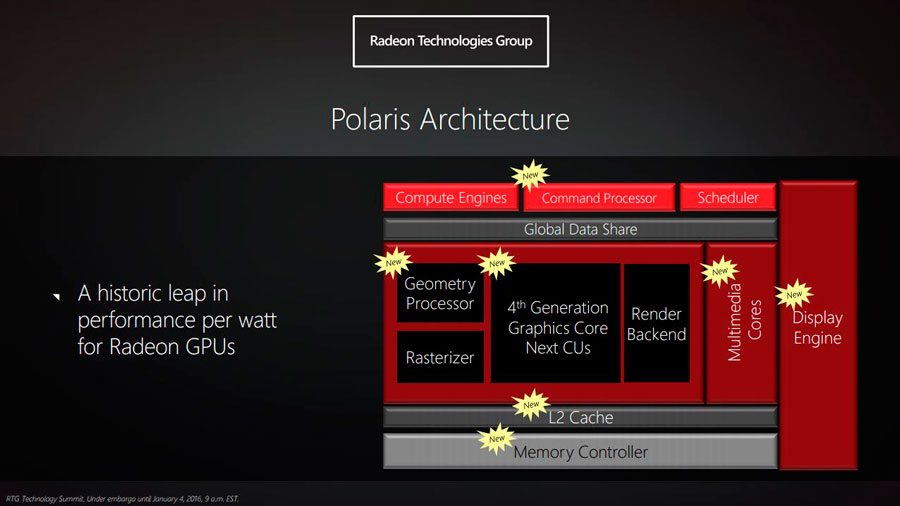AMD Radeon Technologies, the newly announced team of AMD Radeon experts under the leadership of Raja Koduri, just unveiled the AMD Polaris Architecture. The latest architecture of AMD set to battle Nvidia’s Pascal Architecture this year. While both are based on the FinFET multi-gate technology, AMD took the advantage to leap at 14nm manufacturing process as opposed to Nvidia’s 16nm FinFET Pascal.
Gone are the days of Planar gate manufacturing process- and FinFET is the way to go. This is extremely important in today’s PC gaming scene, where 4K is already embraced by some of the masses and VR is looming around the corner, needing faster, yet more efficient GPUs. FinFET did this a while back with Intel’s IvyBridge platform, allowing performance gains with less power required – enabling the manufacturers to create better products and focus the remaining power margins to other things instead.
This is the case with AMD’s Polaris Architecture – especially the Polaris based GPU demo’ed at CES 2016 against the Nvidia GTX 950 where it reigned supreme at 86W on Star Wars: Battlefront, whereas the GTX 950 system featured 140W of power consumption. The test limits both cards at 60 FPS, so detailed power savings and performance when every settings are maxed out and frame capping is disabled are no where to be found. The unknown Polaris based Graphics Card tested is a GDDR5 variant, and is most probably a budget part unless capping the FPS is their reason not to shed light about its real performance which might be even higher.
Among the improved performance per watt figures, there are more to be discussed with when it comes to Polaris’ supported features. That includes HDMI 2.0a and DisplayPort 1.3 support, h.265 decoding, and 4K h.265 encoding. Basically, the graphics card will support the standards of tomorrow’s multimedia needs.
This is a historic leap for AMD indeed, as moving from 28nm to 14nm with FinFET manufacturing process is not a joke. Hopefully, this new GCN architecture will put AMD back on the track, where competition is highly needed especially when DirectX 12 games and VR is just around the corner.







